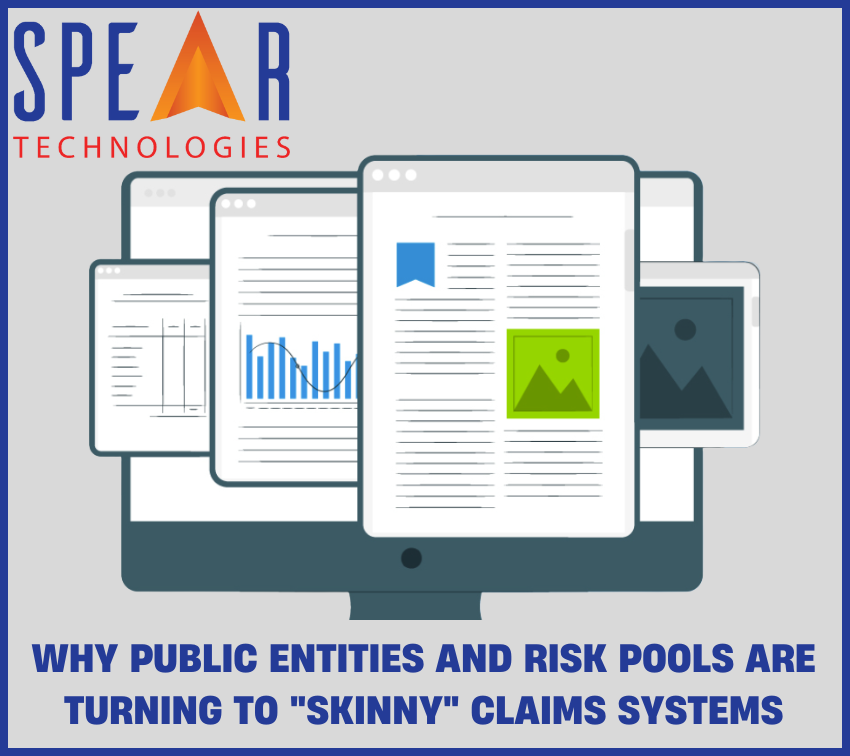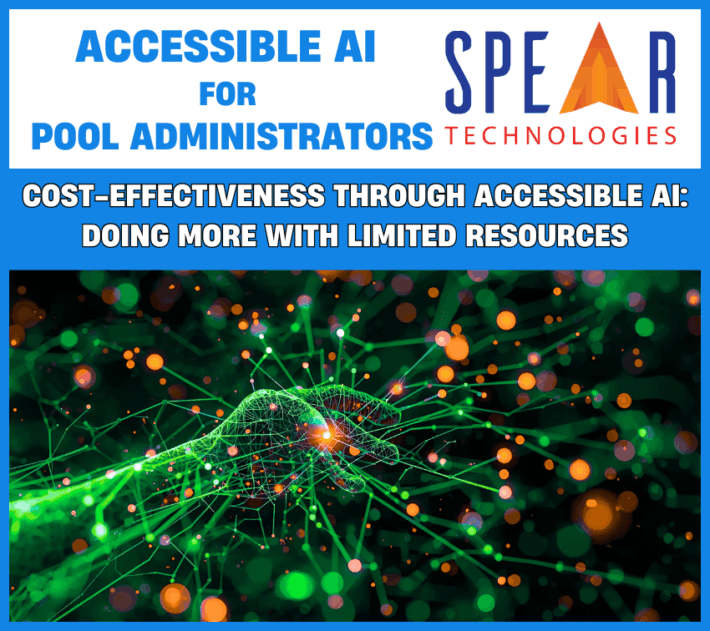Substance Over Size: Why Public Entities and Risk Pools Are Turning to “Skinny” Claims Systems

Modernization in the insurance world doesn’t always mean going big. In fact, as industry analysts Datos Insights point out in their recent article on skinny policy systems and underwriting workbenches, the smartest upgrades are often lean, targeted, and deeply effective.
The same logic applies to Claims Management Software. For public entities and risk pools, success doesn’t depend on adopting a massive, monolithic platform. Instead, it’s about choosing Claims Management Solutions that deliver smart automation, real-time oversight, and adaptability—without unnecessary complexity or cost. A “skinny” claims system delivers exactly that.
What Makes a Claims Management System “Skinny”?
1. Core Claims Functions — Done Right
Every effective Claims Management System for public entities needs to cover all the bases with precision:
- FNOL capture (manual + digital intake)
- Claim file creation with automated data population
- Task and diary management
- Payment and reserve tracking
- Notes, attachments, and correspondence
While avoiding:
- Complex reinsurance modules
- Multi-jurisdictional excess features
- Rule engines that require heavy configuration.
2. Oversight and Transparency Built In
Public entities need to demonstrate accountability and protect public funds. Claims oversight isn’t optional—it’s essential. A modern Claims Management Oversight System offers:
- Configurable dashboards for internal and external stakeholders
- Comprehensive data reporting and visualization
- Real-time reporting to support Service Level Agreement (SLA) tracking and client reviews
- End-to-end audit trails and compliance documentation
- Real-time status updates
- Self-service portals for clients
No need for:
- External data warehouses
- Custom reporting timelines that take months
Traditional claims software just doesn’t provide the visibility public entities need. That’s why modern Claims Management Oversight Systems—designed for public sector needs—are becoming a requirement for organizations that demand transparency.
3. Modular AI and Claims Automation Software
Accessible AI can help reduce leakage and accelerate resolution. The right Claims Automation Software includes:
- AI tools for subrogation flagging, fraud detection, and loss trend analysis
- Severity prediction and triage recommendations
- Duplicate detection and automated alerts
- Auto-generate forms, notices, and correspondence
- Rules-based workflows to eliminate bottlenecks
- Improved resolution timeframes without increased overhead
You won’t be dealing with:
- Costly, complex integrations
- Dependence on data science teams for every tweak
Automation isn’t about replacing people—it’s about letting your team focus on what matters most: serving clients effectively.
4. Low-Code / No-Code Configuration
Public entities often operate with lean teams, and IT bottlenecks shouldn’t stand between your team and a better process. Modern claims management platforms empower business users to:
- Modify workflows, fields, and templates
- Set rules and triggers for automation
- Quickly respond to ever-changing regulations
Without relying on:
- Scripting languages
- Long vendor deployment cycles
- IT involvement
This flexibility helps organizations adapt to new programs and requirements in real time.
5. Open and Flexible Architecture
The best Claims Management Oversight Software connects easily with existing systems, including:
- Intake portals
- Financial and accounting systems
- Policy administration tools
- Document storage
- Smooth data exchange with third-party vendors and partners
Minus the drawbacks of:
- Closed systems
- “All or nothing” core platform commitments
- Rip-and-replace mandates
- Massive middleware deployments.
A truly modern Claims Management Solution supports interoperability from the start.
Why This Matters to Public Entities and Risk Pools
Public agencies and risk pools face unique challenges:
- Managing diverse member needs
- Demonstrating fiscal responsibility
- Maintaining compliance and public trust
- Getting more done with fewer resources
They need Claims Management Systems and Insurance Software Solutions that offer:
- Speed to value
- Oversight without overcomplication
- Risk Assessment Insurance insights without heavy lifting
That’s why more oversight teams are embracing a “less is more” mindset. Skinny Claims Management Solutions allow teams to:
- Stay agile
- Make data-driven decisions
- Enable transparency for all stakeholders
The Takeaway
You don’t need a giant platform to achieve powerful claims oversight. You need smart, streamlined Insurance Software Solutions designed for the realities of public sector risk. A skinny Claims Management System offers the right features—and leaves the unnecessary bloat behind.
“Modern claims oversight doesn’t require a massive core system. It requires smart automation, meaningful transparency, and the ability to adapt—fast. A skinny claims system delivers exactly that.”
If your agency or risk pool is considering its next step in modernization, now is the time to go lean.
See how SpearClaims™ enables TPAs with a Focused, Flexible and Cost-Effective Claims System
SpearClaims™ is the most advanced Claims Management Software for public entities and risk pools, designed to support oversight with intelligence, automation, and flexibility. With SpearClaims™, you can:
- Gain real-time visibility into every claim
- Automate alerts, follow-ups, and compliance tracking
- Leverage AI to prioritize high-value subrogation opportunities
- Track performance across TPAs or departments
- Export data to support board, auditor, or reinsurer reviews
SpearClaims™ helps you move beyond guesswork—so you can recover more, reduce leakage, and benefit from transparency at every stage.
Schedule a Demo to see how SpearClaims™ delivers powerful oversight for public entities and risk pools.
To explore how this flexible, secure platform can help you reduce leakage, improve recovery, and strengthen your claims oversight process at scale – Request Pricing.



